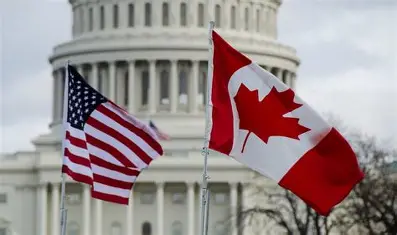After years of trade disputes, political friction, and pandemic-era border tensions, both Canadians and Americans appear ready to turn the page and rebuild the neighborly goodwill that has long defined their relationship. From policymakers in Ottawa and Washington to business leaders along the shared border, a growing chorus is calling for renewed cooperation, economic alignment, and cultural unity between the two North American allies.
For decades, the Canada–U.S. partnership has been one of the most stable in the world, anchored in shared democratic values, deep economic ties, and mutual defense commitments through NATO. But recent years saw strain on that relationship, from tariffs on steel and aluminum under the Trump administration to disputes over energy pipelines, immigration, and environmental policy. Many experts now say both nations have too much at stake to let old resentments linger.
“Canada and the United States depend on each other more than ever,” said Michael Grant, a former Canadian diplomat. “From climate change to continental security, our interests are intertwined. The focus should shift from confrontation to collaboration.”
Across the border, there is a similar sentiment. American policymakers and business executives are emphasizing the need to strengthen trade ties, boost cross-border innovation, and coordinate industrial strategies to remain globally competitive, particularly as China and the European Union ramp up their technological and manufacturing capabilities.
Recent meetings between senior officials have underscored a renewed tone of diplomacy. Both sides have pledged to expand cooperation on critical minerals, artificial intelligence, and clean energy. These sectors are seen as the backbone of future North American prosperity and are crucial to reducing dependence on foreign supply chains.
The public appears to agree. According to a recent poll by Ipsos, a majority of Canadians and Americans view each other favorably and believe closer cooperation would benefit both nations economically and strategically. Younger generations, in particular, see the U.S.–Canada relationship as key to achieving regional energy independence, environmental goals, and technological progress.
Cultural ties remain strong as well. Millions of Canadians visit the United States each year for business, education, and tourism, and vice versa. Hollywood productions continue to film in Vancouver and Toronto, while Canadian artists and innovators play pivotal roles in American entertainment, sports, and science.
Economically, the stakes are enormous. Canada remains the United States’ largest trading partner, with more than $2 billion in goods and services crossing the border daily. The automotive sector, agriculture, and technology industries rely heavily on cross-border supply chains. Experts say fostering policy stability could unlock billions in new investment and job creation on both sides.
Environmental cooperation is another area of shared interest. Both countries face the pressing challenge of managing climate change impacts on shared ecosystems, from the Great Lakes to Arctic sovereignty. Joint research, conservation efforts, and infrastructure projects are seen as vital steps in addressing these transboundary issues.
Still, challenges persist. Disputes over softwood lumber, dairy access, and Buy American provisions continue to test the relationship. But policymakers stress that these disagreements should not overshadow the broader partnership built on trust, history, and shared prosperity.
In the coming months, Canada and the United States are expected to unveil new frameworks for defense coordination, cybersecurity, and border modernization. Analysts say these steps will symbolize a mutual desire to strengthen ties in an increasingly uncertain global landscape.
For ordinary citizens, the message is simple: it is time to put the animosity behind. Whether it is cooperation on energy security, shared infrastructure, or cultural exchange, both nations seem ready to move forward as equal partners in building a more resilient and prosperous North America.



